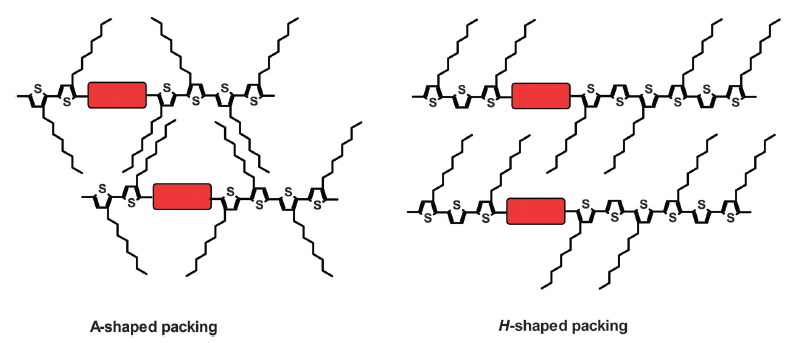Organic polymers with metal-like properties have been an active area of chemical research for nearly seventy years. In this HOT Chem Soc Rev review, Adam Pron, Piotr Bujak, and colleagues from the Warsaw University of Technology and the Joseph Fourier University in Grenoble give an accessible and detailed account of the current state of the art in delocalised polymeric organic materials, focussing on neutral polymers which function as semiconductors. The application of semiconducting organic materials in devices such as FETs, LEDs, photovoltaic cells, photodiodes and magnetic photoswitches is described.
The synthesis, by Grignard reaction, transition metal or boron catalysed coupling reactions, and basic chemical characterisation of the major classes of organic semiconducting polymer are summarised. This is followed by a detailed review of the chemistry and application of 4 classes of polymer in various electronic devices over the last three years. The classes described are: polymeric semiconductors with n-type and with p-type conductivity, low-band gap semiconductors and also high-spin macromolecules.
Methods of delivering highly ordered phases of polymers via solution processing are given, along with relevant electrochemical and magnetic information such as electron affinity, ionization potentials and magnetic moments. High-spin materials are of interest in spintronics, due to their potential for lower power consumption and faster information transfer than classical electronic components.
This is a very detailed review that successfully gives a comprehensive picture of the history, synthesis, characterisation, development and current state of the art of neutral semiconducting and high-spin polymers, and their application in modern electronics.
Read this HOT Chem Soc Rev article today!











